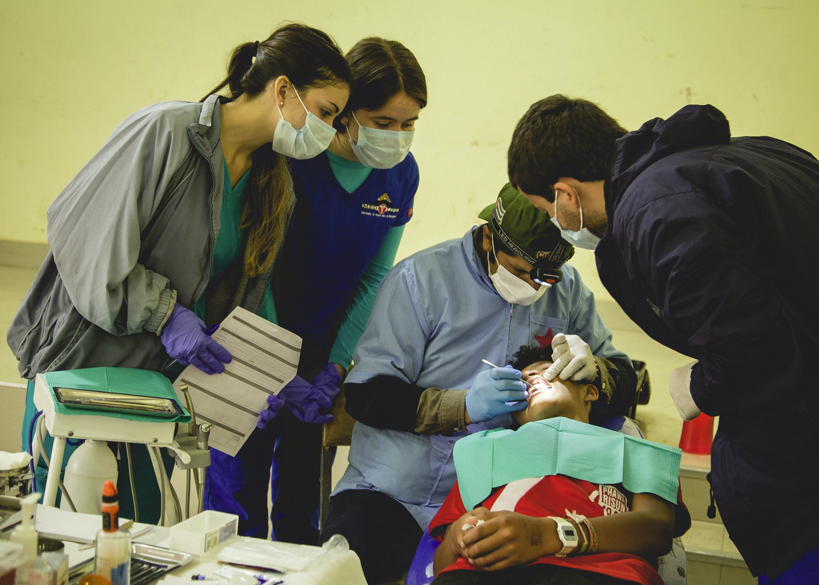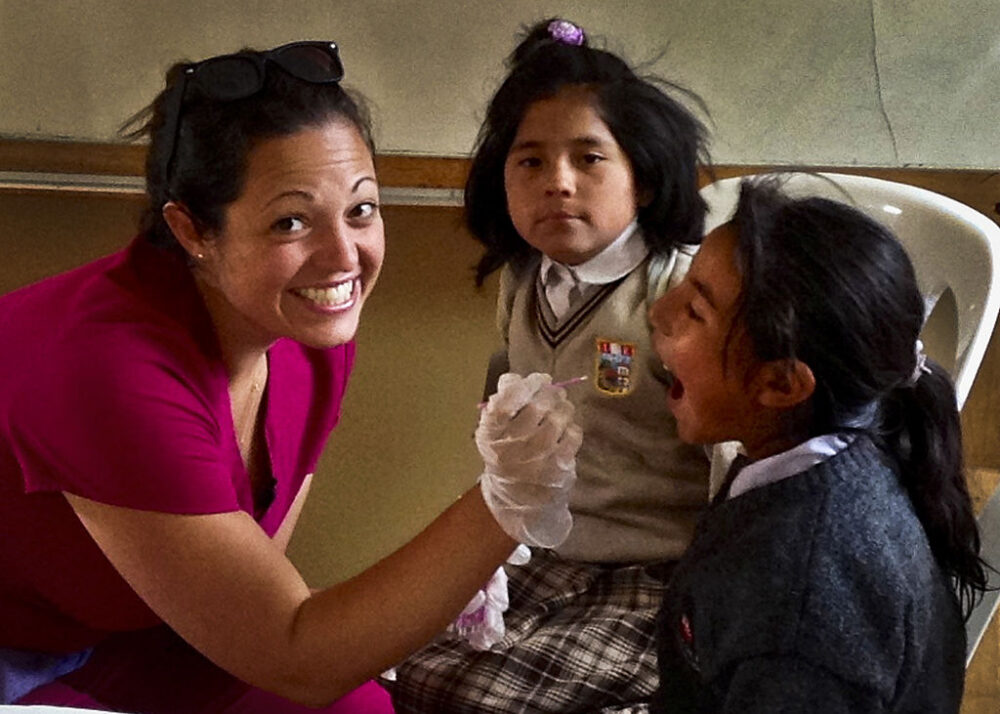Good dental health matters for everyone, everywhere. It’s about more than just smiles; it’s a big part of our overall health. But in places like Peru, some challenging barriers make it hard for dental care to reach everyone. The country’s mix of city life and far-off rural areas creates real challenges. Some people can get to a dentist easily, while others might have a harder time because of where they live or what resources they have. By looking closer at comprehensive dental care in Peru, we learn about more than just teeth. We see how different factors in a country can make it more challenging for people to stay healthy. It’s a chance to understand the bigger picture of health in countries like Peru and what needs to be done to help everyone have access to proper care.

The Current Landscape of Dental Health in Peru
Comprehensive dental care in Peru faces several challenges, impacting various groups differently. Firstly, cavities are widespread across all ages. This is often due to limited awareness about proper dental hygiene practices and insufficient access to resources like fluoride toothpaste and quality toothbrushes.
Access to dental care varies significantly between urban and rural areas. In cities, there’s a higher concentration of dental professionals, making it easier for people to receive regular examinations and treatments. However, in rural regions, the scarcity of clinics and professionals means residents sometimes ignore routine check-ups, allowing preventable issues to escalate into severe conditions.
Another widespread concern is gum disease, particularly among the elderly, contributing to broader health complications if left unaddressed. This situation is further complicated by economic disparities. Those from higher economic brackets tend to receive superior dental care, resulting in pronounced inequality in oral health and treatment quality.
Peru’s diverse geography, including regions like the Andes and the Amazon, poses additional accessibility challenges. The rugged terrain and distance from urban centers complicate residents’ access to competent dental care, emphasizing the need for a more inclusive healthcare system.

Understanding Comprehensive Dental Care in Peru
In Peru, not everyone has the same access to dental health services. Several factors create this divide, making it harder for some people to get the care they need for healthy teeth and gums.
One of the main issues comes from the difference in living areas. People in cities often have more dental clinics nearby than those in the countryside. With their larger populations, urban areas attract more dentists and offer more types of dental services. On the other hand, rural areas might not have a single dentist for many miles, forcing residents to travel far for care or, in many cases, skip it entirely.
Money matters as well. People with more money can afford better services, regular check-ups, and treatments like braces or fillings. However, those with less income might have to ignore problems until they become too painful to bear because they can’t afford the costs.
Public healthcare tries to help, offering basic services for free or at a lower price. But with limited funding, they can’t always provide everything someone might need. Private clinics fill in these gaps, but they often charge more than what many people can pay.
So, where you live and how much money you have can make a big difference in the kind of dental care you can get in Peru. This situation highlights the need for changes to ensure everyone can have healthy smiles, regardless of background or location.

How COVID-19 Changed Dental Services
When COVID-19 hit, it changed a lot of how we live, affecting health services in countries worldwide, including Peru. Comprehensive dental care in Peru care faced unique challenges, as dentists work close to patients’ mouths, increasing the risk of spreading the virus.
During the strict lockdowns, most dental clinics had to close. This wasn’t just a small change; it disrupted countless people’s regular check-ups and ongoing treatments. Only severe cases, like extreme pain or infections, were treated, as these were considered emergencies. This pause meant minor issues could grow into bigger problems, all because people had to wait for routine visits.
Dentists and health authorities had to think fast to keep dental health practices safe. They introduced new rules like wearing more protective gear, using special mouth rinses, and setting up additional waiting rooms to keep people apart. These measures aimed to lower the risk of the virus spreading in dental clinics.
One significant change was the move to tele-dentistry. Dentists began consulting patients over the phone or online. This way, they could give advice or prescribe medicine without patients having to leave their homes. While this was helpful, it was not the same as in-person visits, and not all treatments could be managed this way.
Dental services also started to use stricter cleaning routines and scheduled fewer patients in a day to avoid crowding. Though necessary, these measures meant longer wait times for appointments and delays in treatment.
The pandemic showed how flexible but also vulnerable health services, including dental care, can be. Adapting to such unexpected events ensures that people continue receiving essential care, but it also highlights areas for improvement. As a result, discussions about better health service structures, especially in dental care, have become more widespread, indicating a silver lining amid the crisis.

Why Regular Dental Check-Ups Matter
Taking care of your teeth is more important than you might think. It’s not just about a bright smile; it’s about staying healthy. Regular dental check-ups play a huge role in this. When you visit the dentist, they’re not just looking for cavities. They’re checking your overall dental health, making sure your gums are healthy and that there are no signs of other issues.
Why wait until you have a toothache? Finding problems early can save you a lot of pain! Dentists can spot issues before they get serious. For instance, catching gum disease early can help prevent tooth loss, and treating cavities on time can save teeth from more significant damage.
Practicing good dental hygiene is another must-do. Simple things like brushing twice a day and flossing can prevent problems in the first place. It’s easier to prevent issues than treat them.
But there’s more to it. Staying on top of your dental health can actually save money in the long run. How? Preventive care avoids the need for big, expensive treatments later on. Regular check-ups might cost a bit, but they’re nothing compared to the cost (and discomfort!) of requiring serious dental work.

New Steps Forward for Comprehensive Dental Care in Peru
Thanks to several inventive strategies, Peru is witnessing a transformation in dental health services. One notable approach is the deployment of mobile dental clinics. Functioning as fully equipped dental offices, these vehicles extend services to distant regions, effectively bridging the gap for residents in remote or underserved areas.
Furthermore, community outreach programs are instrumental in enhancing dental health awareness. These initiatives dispatch health professionals into communities to educate individuals about dental hygiene, conduct complimentary check-ups, and administer basic care..
Tele-dentistry is another amazing new advancement. This system allows for remote dental consultations via video communication, facilitating professional advice without the need for in-clinic visits. This innovation is especially beneficial for those living in far-flung areas or with travel constraints.

The Government's Role in Dental Health Improvement
The Peruvian government recognizes the importance of dental health and has implemented programs to support its people. One significant step is the inclusion of dental services in the Comprehensive Health Insurance (SIS), aiming to make care more affordable, especially for lower-income families.
They have also launched initiatives to promote better dental health in rural communities. These include educational campaigns and providing free basic dental care, targeting prevention at an early age.
Plans for the future are promising. Health authorities are discussing expanding mobile dental services and increasing funding for oral health in public schools. These actions show the government’s commitment to improving the dental health landscape in Peru, ensuring broader access and preventive care for all citizens. The focus on support programs and forward-thinking policies is crucial in shaping a healthier future for every Peruvian.
Taking Charge of Your Dental Health
Dental health requires a daily commitment, and everyone has a role to play. Brushing at least twice a day, flossing, and regular check-ups are the foundation of good oral hygiene. Eating healthy, like avoiding too many sugary snacks, also helps protect your teeth. Remember, education is powerful. The more you know, the better you can care for your teeth. Schools and communities sometimes host workshops or have information about dental health. Staying informed can make a big difference in your overall health.
A Unified Journey for Better Dental Health
Peru’s journey toward improved dental health is a shared responsibility. Progress is happening from the government’s support programs to innovations like the Smiles Movement, which focuses on proactive dental care and education. This movement highlights the power of collective effort, showing how unified actions can make dental care accessible and effective.
The landscape of dental health in Peru is changing, but it doesn’t stop with policies and programs. It’s about each person taking steps towards their dental hygiene, professionals providing quality care, and authorities offering the needed support. With your help, a nation of healthy smiles can be built, reflecting the vibrancy and resilience of all Peruvians!






